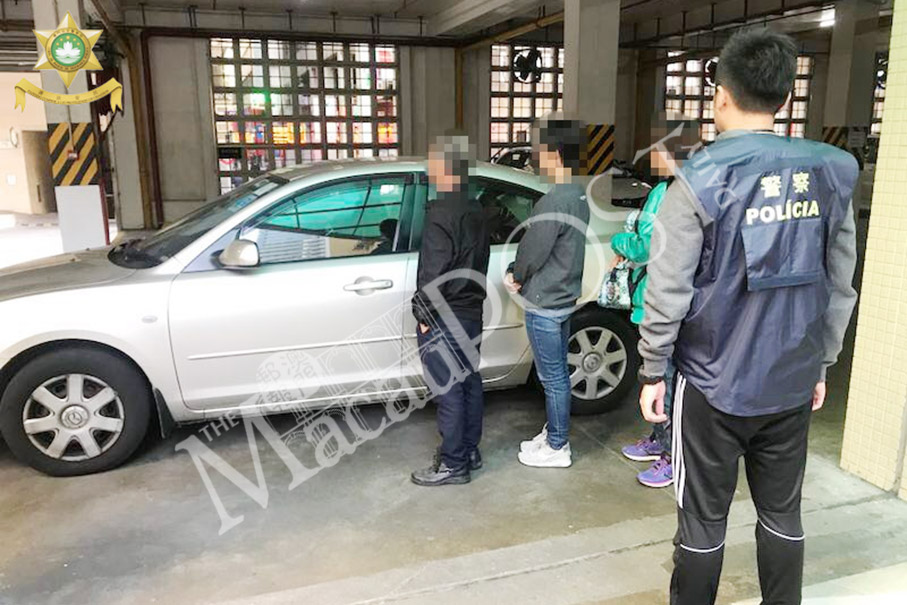Interview by William Chan
Director Jenny Mok (莫倩婷), Nada Chan (塵雅正), head of the theatre company, and Chen Chiao-Jung (陳巧蓉), the project’s artistic director, have recently spoken to the Post about their play “Outside the Window” (窗外).
The play is organised by the local Route Arts Association as part of their series entitled “écriture féminine.”
Écriture féminine, or “women’s writing,” is a term coined by French feminist and literary theorist Hélène Cixous in her 1975 essay “The Laugh of the Medusa.” Chen noted that the concept of écriture féminine originated from a historical period when women were oppressed, and some creators emerged to advocate against suppressing women’s voices. Initially, it focused on oppressed women, but Chen noted that she used the concept more broadly encompassing all oppressed and overlooked individuals.
Chan noted that the script of “Outside the Window” is non-linear, consisting of 15 seemingly unrelated scenes. The play is composed of fragmented and disjointed elements, with a central theme exploring the fear of death. Mok, as the play’s director, said her role was to bring these fragments together and enhance the impact. Through editing, choreography, and constant discussion with the scriptwriter, she wove the scenes together to create a cohesive narrative, adding more vibrancy and depth to the play.
According to Mok, the main theme of the play is “life and death” and the anxiety associated with death. One scene involves elderly parents being interviewed about their daughter’s mental health issues and the challenges their daughter would face after their death. The relationship between parents and their disabled children reflects the complexities and subtle connections intertwined with death. Mok said that the play also touches on the loneliness between individuals, extending beyond the topic of death, as everyone comes to life alone and dies in solitude.
Chen also commented on the non-linear structure, saying that it not only challenges traditional forms of linear presentation but also reflects the current societal trends. With the prevalence of short videos in social platforms, “Outside the Window” may align with the evolving preferences of the audience, providing a refreshing and perhaps odd experience for the audience of the traditional play format.
Chen noted that “Outside the Window” adopts a script-reading format, allowing participants to practise closely reading the script and constantly providing feedback to the scriptwriter. She emphasised the importance of this format for scriptwriters, as they can hear different interpretations and perspectives from the participants and directors, rather than settle down the script once it is finished.
This approach promotes stronger collaboration and feedback, particularly for scriptwriters who often work alone, she said, adding that even during the performance, the script remains open for amendments, and the actors might read directly from the script during performance.
Chan said that the format of script reading will not affect the atmosphere of the performance, referencing their previous performance at the Macau Art Garden, where the play explored the concept of truth, as it delved into a murder case that revealed hidden aspects and personal truths. “The performance remained intense for the audience, akin to a podcast enriched with visuals,” she said.
Chan highlighted that this format emphasises the script itself over elaborate stage or costume designs, resulting in a minimalist production approach. The script-reading format prioritises continuous collaboration and refinement among the creative team, aiming to deliver a dynamic and impactful theatrical experience centred on the written work, Chan said.
There will be three performances of “Outside the Window” on June 15 and 16 at the Hio Kok Experimental Theatre in Nam Fong Industrial Building in Areia Preta. For more information, visit: https://sites.google.com/view/routeart-feminine-writing/
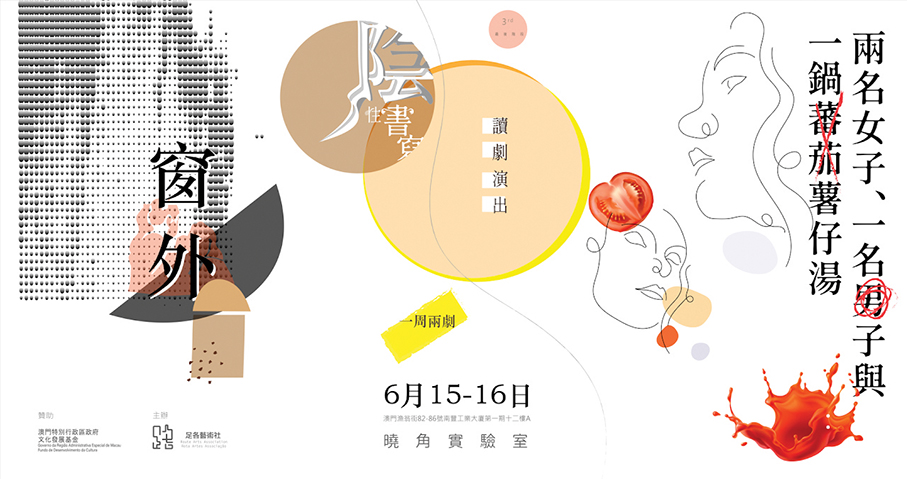
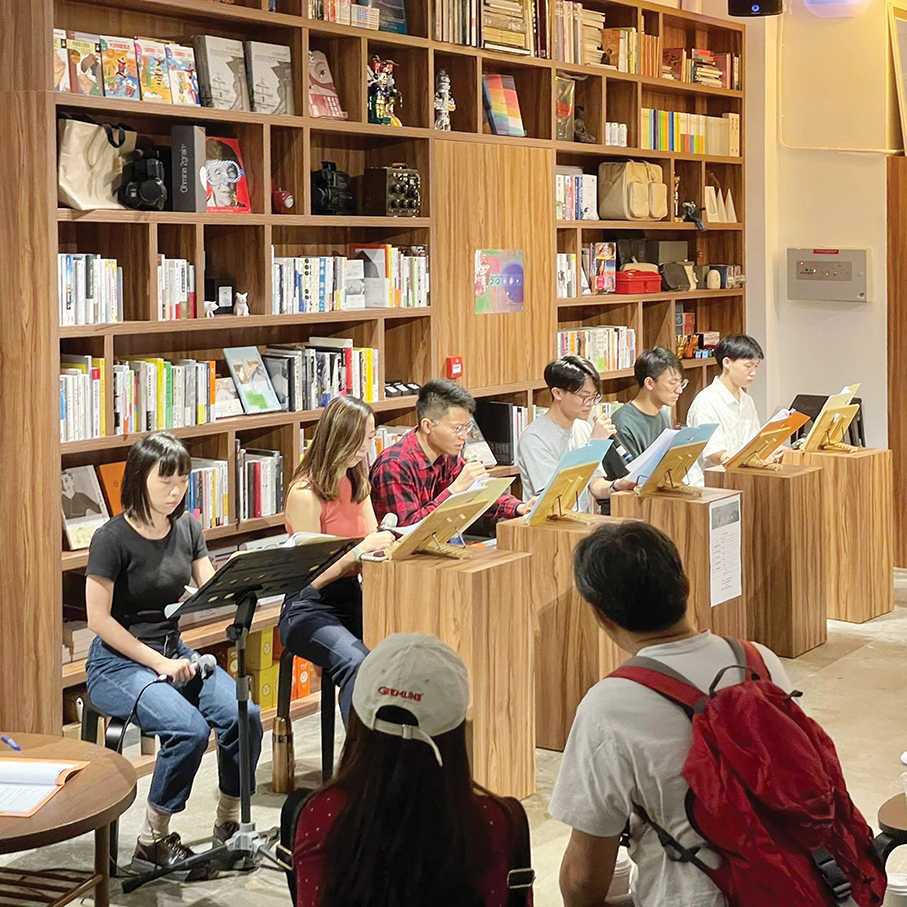
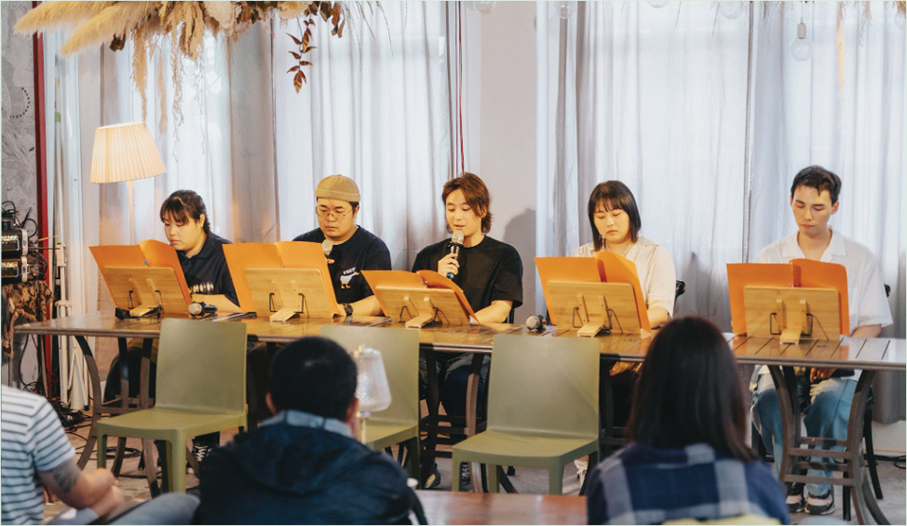
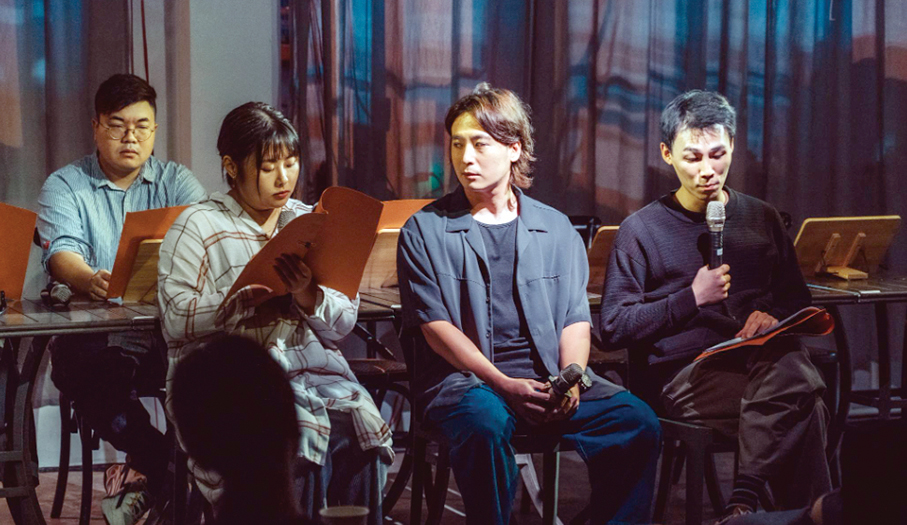
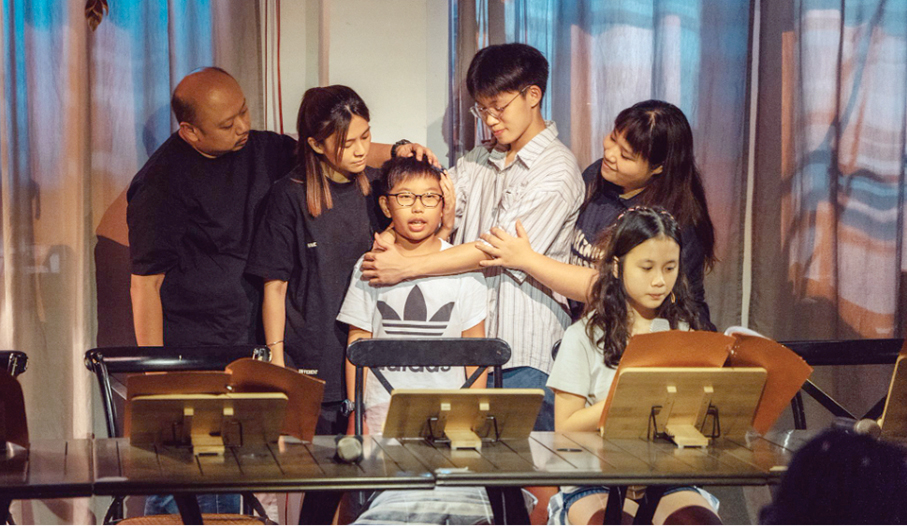
These undated photos show past performances of participants engaging in script reading. – All photos provided by Route Arts Association




